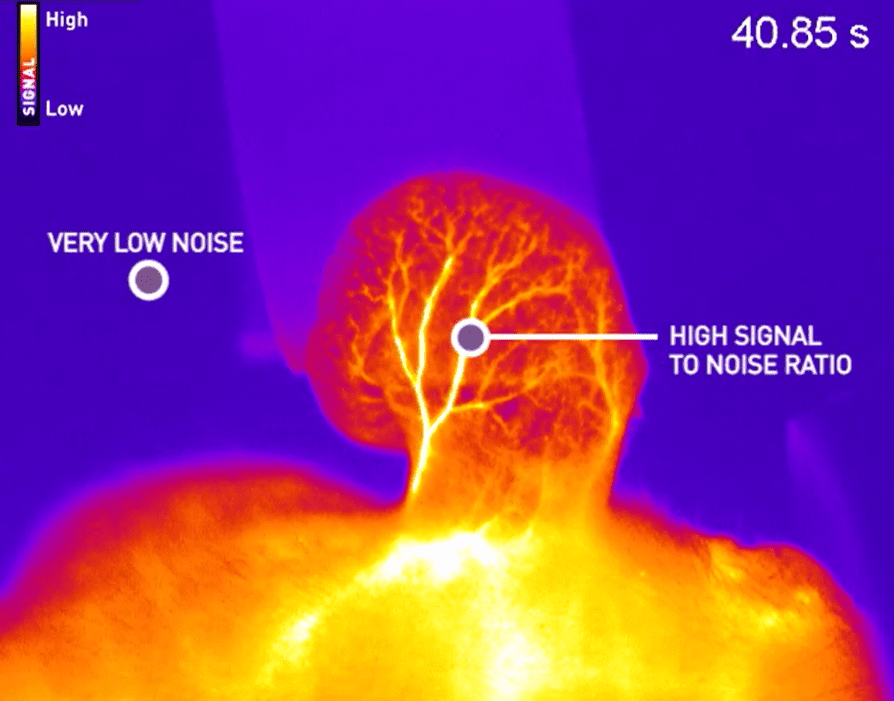All our applications
ASTRONOMY
Visible cameras have been used for a very long time in astronomy, and now, Short Wave Infrared (SWIR) cameras are opening the path to new observations and discoveries. Unlike light at visible wavelengths, infrared light is not blocked by interstellar dust.
Astronomers use SWIR cameras to study the J-band (1.1 – 1.4 µm), H-band (1.5 – 1.8 µm ) and K-band (2.0 – 2.4 µm). One of the major applications of First Light Imaging’s cameras in astronomy is adaptive optics: the active correction loop used to reduce the atmospheric disturbances that cause spatial and temporal distortions.
Whether observations are made in visible or infrared spectra, in Adaptive Optics as well as Exo-planet research, laser communications or ground based observations, the key is to use very sensitive cameras able to achieve a very high frame rate. For applications that require long integration times, cooling is crucial, as it allows to integrate for several minutes.
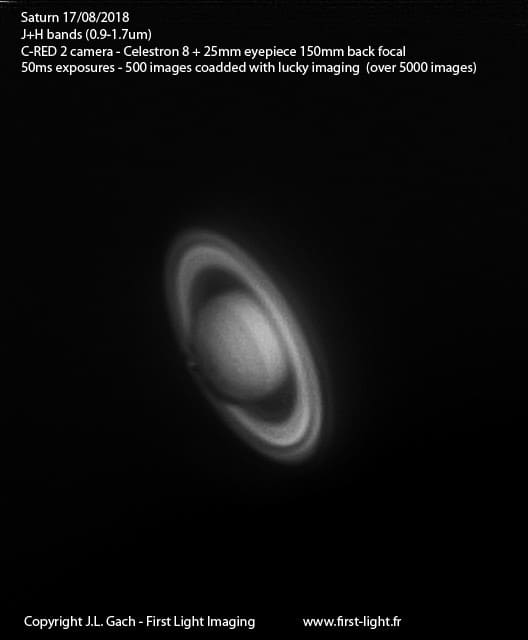
Astronomy imaging in the SWIR range. Image of Saturn at 50ms exposure with C-RED 2 / Courtesy of JL Gach, First Light Imaging

Astronomy imaging in the visible range. Extreme Adaptive Optics with OCAM²K – image of a pupil with Pyramid wavefront sensor system with a 3.5 kHz binned frame rate and a 0.3e- read-out noise at a gain of 600x. Courtesy of NAOJ / Subaru Coronagraphic Extreme Adaptive Optics SCExAO.
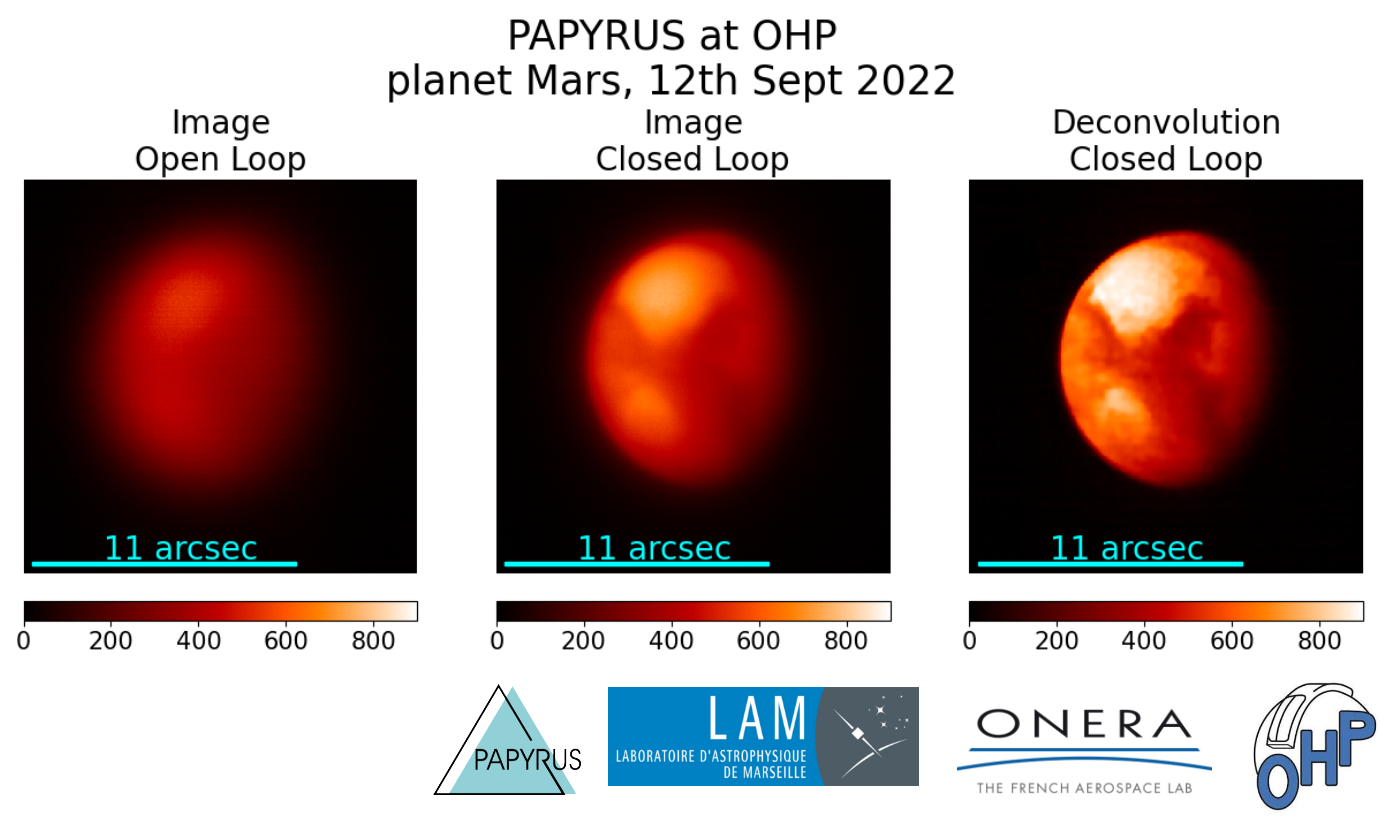
Astronomy imaging in the visible range. Image of Mars from the PAPYRUS OA system with OCAM² / Courtesy of PAPYRUS, LAM, ONERA, OHP
For SWIR imaging, discover the world’s high speed low-light e-APD MCT camera C-RED One (sensitive from 0.9 to 2.5µm), as well as C-RED 2, a low-light versatile InGaAs-based camera (sensitive from 0.9 to 1.7 µm) with the highest frame rate on the market. Among our high speed SWIR cameras, the SWaP optimized C-RED 3 has been designed explicitly for industrial applications, such as Free Space Optics (FSO).
-
- Our clients’ applications include:
- Astronomical observations [Discover the note from SUBARU Telescope]
- Exo-planet research
- Wavefront sensing & Adaptive optics [Discover the Nature Research / Scientific Reports Article from L.Yang et al., CIOMP / Discover the press release PAPYRUS from CNRS/LAM and ONERA]
- Free Space Optics [Discover Dr. JL Gach’s scientific paper: C-RED 3: A SWIR camera for FSO applications / Discover our FOCUS ON… FSO & AO with C-RED 3]
- Ground-to-space communication
- Secure laser communication
- Laser/ speckle interferometry
- Fringe tracking
- Space debris tracking
NEW SPACE
Technology in the space industry is rapidly and continuously evolving, encouraging the emergence of new applications. New space companies have focused on reducing the cost of access to space and encouraged innovative companies that offer unique solutions for space-related challenges. Space exploration or debris cleanup, satellite communications, earth observation and remote sensing, among others, are examples of new space applications, revolutionizing the space industry.
With over 10 years of expertise as a specialist in scientific visible and infrared cameras for wavefront sensing and astronomy, and in response to the increasing demand for New Space applications, First Light Imaging is launching its latest innovation: off-the-shelf and customizable high speed low noise SWIR (short wave infrared) camera solutions for New Space optical payloads.
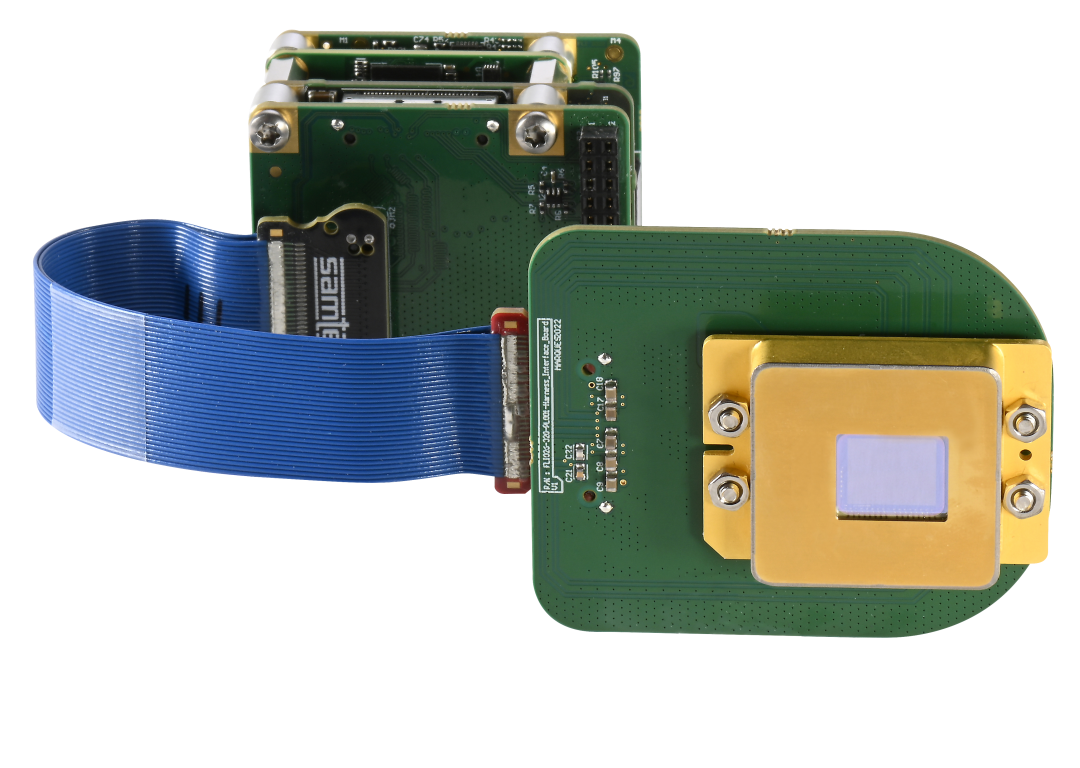
C-RED New Space: the SWIR camera core can be provided with a structure for boards protection

Planet. © Alex Myers.
Designed for space optical payloads, C-RED New Space is a high speed low noise SWIR camera core designed to maintain optical performance and support extreme conditions of space operations.
-
- New Space applications include:
- FSO (Free Space Optical) communications [Learn more about FSO with our FOCUS ON… FSO & AO with C-RED 3 and our FOCUS ON… Wavefront sensing & adaptive optics]
- Cubesats
- Space exploration
- Data exchange
- Earth observation
- Hyperspectral imaging [discover our FOCUS ON… High speed SWIR hyperspectral imaging with C-RED 3]
- Meteorology
- Defense and security
- Environmental monitoring
- Gas detection
LIFE SCIENCES / RESEARCH
Imaging is vastly used in life science applications. Thanks to performant objectives, life can be studied at different scales, ranging from microscopic (sub-cellular) to macroscopic (full organism) levels.
High speed low-light cameras in the visible range enable high performance imaging, for various applications ranging from super-resolution applications (that require the rapid acquisition of multiple frames) to Raman spectroscopy.
Short Wave Infrared (SWIR) imaging is often referred to as NIR-II imaging in the life science community. Thanks to low scattering and low tissue autofluorescence in this range, NIR-II imaging allows deep, non-invasive, high-resolution detection of in vivo or ex vivo tissues. With the recent and growing development of contrast agent and dyes that emit at higher wavelength, more and more applications can be targeted.
First Light Imaging’s cameras are C-Mount: they can be easily mounted on most existing microscopes.
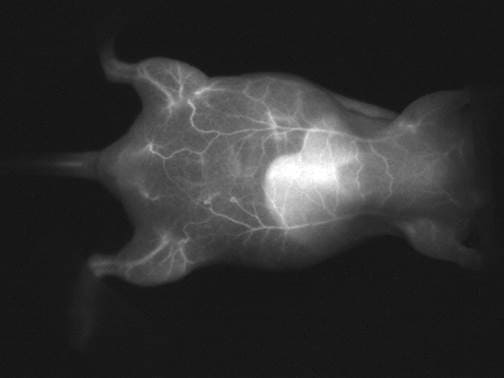
In vivo small animal imaging in the NIR-II range. Back head view of a nude mouse after intravenous injection of IndoCyanine Green (ICG). Acquisition parameters : high speed SWIR camera C-RED 2 cooled down to – 40°C, High gain, 200FPS (5 ms integration time). 808 nm excitation. Raw image, no post-processing applied. Credits Optimal Grenoble.
Monitoring of ear vasculature in the NIR-II range (ICG fluorophore, 808 nm excitation). Acquisition parameters : high speed SWIR camera C-RED 2 cooled down to – 40°C, High gain, 20FPS (50 ms integration time). Raw image, no post-processing applied, false color display. Credits Optimal Grenoble.
All our cameras can be used for life science applications. In the SWIR range, our clients privilege C-RED 2 for research on biomarkers and fluorescence micro and macro-scopy. Its easy integration, adjustable cooling temperature and performant on-the-fly image corrections are real assets. For some specific applications, C-RED One may enable you to detect extremely low signals. In the visible range C-BLUE One is the perfect choice for high-resolution microscopy applications which require simultaneous high speed and high sensitivity.
- Our clients’ applications include:
- Pre-clinical NIR-II fluorescence imaging [Discover our FOCUS ON… In vivo NIR-II Small animal imaging with C-RED 2]
- Dynamic small animal monitoring [check out our videos on our Youtube channel]
- Fluorescence microscopy
- Optical Coherence Tomography (OCT)
- Raman spectroscopy
- Cellular imaging
- Development of new biomarkers [FOCUS ON… Development of fluorescent biomarkers with C-RED 2]
- Imaging single carbon nanotubes [Discover the scientific paper by L.Cognet : Imaging single carbon nanotubes with C-RED 2 InGaAs camera at high frame rates]
- Photo-Dynamic Therapy (PDT)
- Hyperspectral imaging [Discover our FOCUS ON… High speed SWIR hyperspectral imaging with C-RED 3 ]
INDUSTRY
Imaging has long been used in industrial processes to measure, monitor, control or otherwise manage the production of goods. The challenge is to capture vivid and measurable contrast of the monitored objects’ characteristics.
Machine vision is well spread in the visible range, as an alternative to human monitoring. The Short Wave Infrared band is becoming a strong alternative as it enables to see more…
SWIR provides highly contrasted images that enable the differentiation of materials or the identification of defects. Additionally, SWIR cameras can see through coatings or containers that are opaque to the eye. They enable visualization of underlying features such as fill levels, anticounterfeiting security codes, or hidden moisture while using machine vision standard glass optics.
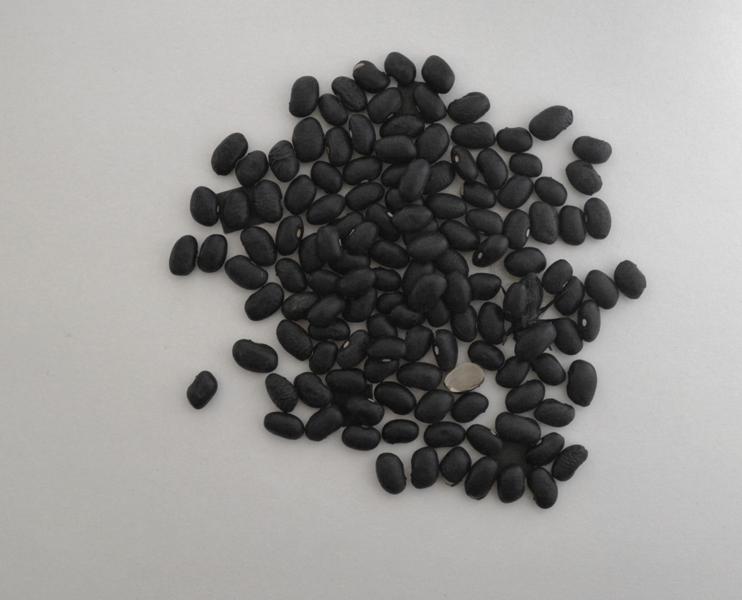

Images in the visible and SWIR (900 – 1700 nm) range of black beans polluted by a plastic fly and a few square cardboard pieces. Note how SWIR immediately highlights the intruding elements! Camera used: high speed SWIR camera C-RED 3 with SWIR lens 16 mm, uncooled, non-stabilized, low gain.

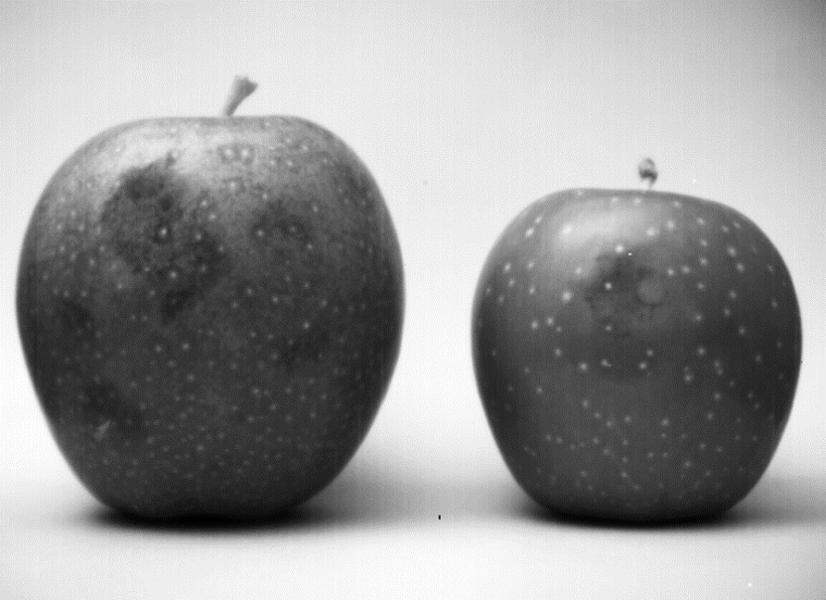
Images in the visible and SWIR (900-1700 nm) of two apples. In the visible range, apples look fresh, no bruises are visible. In the SWIR range, bruises are visible which enables sorting. Camera used: high speed SWIR camera C-RED 3 with SWIR lens 16 mm, uncooled, non-stabilized, low gain.
For industrial applications, that require compact, robust and low SWaP machine vision tools, First Light Imaging has developed the C-RED 3 camera. Benefiting from the legacy of our range of scientific cameras, C-RED 3 offers unprecedented performance for machine vision application.
- Our clients’ applications include:
- Multi and hyperspectral imaging [discover our FOCUS: High speed SWIR hyperspectral imaging with C-RED 3]
- Industrial quality and production control
- Nondestructive inspections
- Blister control (pharmaceutical industry)
- Food inspection and quality control
- Welding [check out our videos on our Youtube channel]
- Additive manufacturing [Discover our FOCUS ON: Monitoring weld deposition in additive manufacturing with C-RED 3]
- Inspection of solar cells [Discover our FOCUS ON: Drone-based photovoltaic inspection with C-RED 3]
- Semiconductor inspection
- Plastics and textile sorting
- Free space optical communications [Discover Dr. JL Gach’s scientific paper: C-RED 3: A SWIR camera for FSO applications / Discover our FOCUS ON… FSO & AO with C-RED 3]
- Laser detection and characterization [Discover our FOCUS ON: High speed SWIR laser beam profiling + check out the video on our YouTube channel]
- Thermography [Discover our FOCUS ON: Thermography + check out the video on our YouTube channel]
SURVEILLANCE / SAFETY
One of the principle advantages of using SWIR technology for Safety or Surveillance applications, is the ability of SWIR cameras to “see through”. See through smoke, haze, mist, fog and other challenging atmospheric conditions. A significant improvement of contrast compared to visible range images can be observed. Furthermore, our SWIR cameras offer high sensitivity in low light environment, allowing night vision, for example.
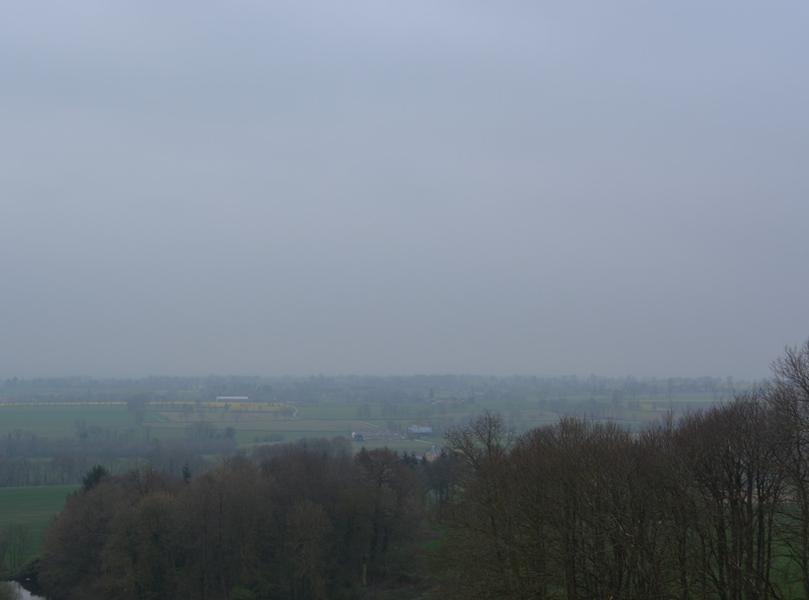
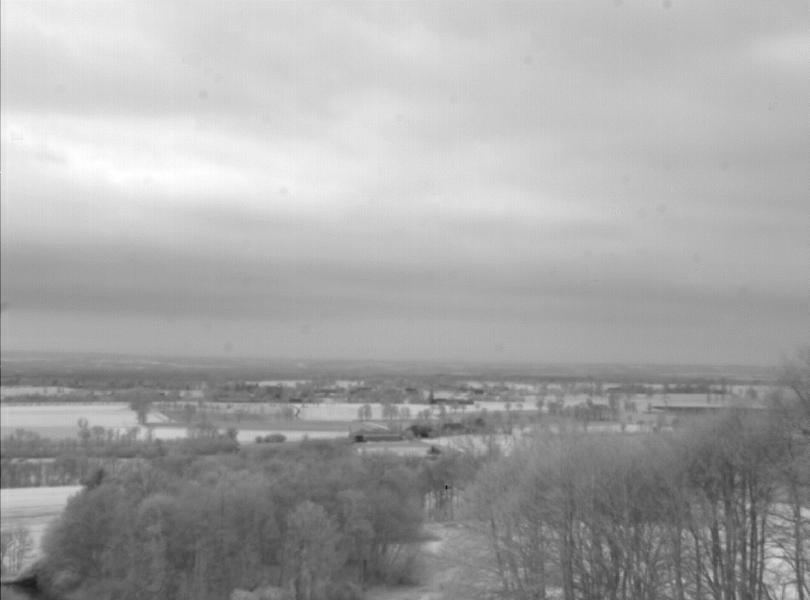
Images in the visible and SWIR (900 – 1700 nm) range of a foggy countryside view. In the SWIR range, you can see “through” the fog and see the trees a couple of hundred meters further than in the visible range. Camera used: C-RED 3 with SWIR lens 16 mm, uncooled, non-stabilized, low gain.

Night vision in the SWIR range. Imaging of a boat in a swimming pool, by a moonless night. Camera used: C-RED 2 with SWIR lens 16 mm, cooled down to -15°C, High gain.
For surveillance applications, we recommend the C-RED 2 and C-RED 3 cameras. Optimized performances are possible with the High Dynamic Range (HDR) feature.
C-RED 3 compactness and low weight opens perspectives to embark it on an Unmanned Aerial Vehicule (UAV) / drone. Remember that C-RED 3 and C-RED 2 can be run on a Jetson platform and power supplied from a portable battery.
-
- Our clients’ applications include:
- Night vision
- Maritime surveillance [check out our videos on our Youtube channel]
- Long range tracking
- Cloud and smoke penetration
- Detection of forest fires
- Drone-embedded surveillance
And many more…
Infrared cameras are used for art conservation and analysis. They can detect details beneath the surface of a painting, where visible cameras are blind.
Surface pigments are typically transparent at wavelengths longer than 1100 nm, and our high speed low noise Short Wave Infrared (SWIR) cameras can be used as non-invasive detection instrument for painting inspection, such as identification of alterations, counterfeiting, copying, overpainting, or erased marking, providing information on hidden structures which are invisible to human eye.

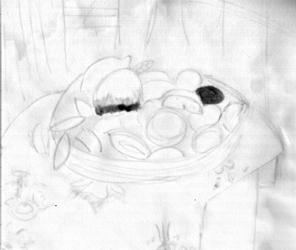
Images in the visible and SWIR range of a water-based painting over a pencil drawing on paper (anonymous artist).
By examining the painting in the SWIR range, it is possible to see beneath the paint and see the artist’s initial drawing.
Camera used: High speed SWIR camera C-RED 3 with SWIR lens 16 mm, uncooled, non-stabilized, low gain
In Brief…
First Light Imaging’s cameras, from visible to short wave infrared, offer incredible possibilities in various fields. With high sensitivity, high speed, high resolution, get the maximum performance for your application.
Be ready to MAKE THE INVISIBLE VISIBLE !


